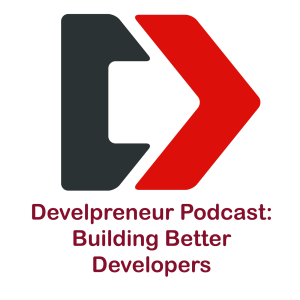
Bridging the Gap: How Developers Can Thrive Amidst Differing Methodologies
 2024-07-04
2024-07-04
Welcome back to our podcast series, where this season, we are talking about the developer journey, focusing on Bridging the Gap: How Developers Can Thrive Amidst Differing Methodologies and growing together within development teams. Various milestones mark the path of a developer; some are encountered early, some later, and some recurring. One common challenge is dealing with situations where team members, bosses, or clients may have different directions or methods than what you’re accustomed to. How do you ensure you get the job done while raising necessary concerns? Let’s explore this dynamic.
Check out the podcast Bridging the Gap: How Developers Can Thrive Amidst Differing Methodologies.In the early stages of a developer’s career, headbutting often arises from transitioning out of educational environments or specific companies where a certain style or methodology was the norm. This clash occurs because you enter the "real world" with ingrained processes that might not align with new environments. For instance, you might have learned a particular way of solving problems or writing code that doesn’t fit with your new team’s standards.
The Handball Analogy: Recognizing StylesConsider an analogy: Rob played handball, a sport similar to racquetball but without the racket. After many years, He met an old acquaintance who only recognized him by his playing style. This highlights how our formative experiences shape our approaches. Similarly, in software development, early training leaves indelible marks on our coding styles and problem-solving methods. Recognizing and respecting these stylistic differences in a professional setting can be challenging but essential.
Embracing Organizational StandardsWhen you join a new team, adhering to their established standards and processes is crucial. While you may have a preferred way of doing things, it’s important to understand and follow the team’s practices. If you encounter inefficiencies or unclear procedures, ask questions respectfully. Sometimes, the response might be, “That’s how we do it,” and you’ll need to adapt. Other times, you’ll gain insights into why certain methods are in place, particularly in larger organizations where consistency and reliability are paramount.
The Value of Consistency Is important to Bridging the GapConsistency in coding standards is vital for maintaining and scaling software. Imagine a scenario where different parts of a project look like they were written by various people without a common style. This lack of uniformity increases maintenance costs and complicates future updates. For example, a seasoned developer might introduce a new, efficient method but fail to update the rest of the project, leading to a mishmash of old and new styles. It’s essential to not only adopt new methods but also ensure they’re applied consistently across the project.
The Ego FactorDevelopers often bring a certain level of pride and ego into their work, stemming from their problem-solving skills and experience. However, when entering a new environment, it’s important to check this ego at the door. The organization might not owe you explanations for their methods, especially if you’re new. Instead, focus on understanding and adapting to their practices, leveraging your skills to enhance their established processes rather than imposing your own.
The Balance of Innovation and ComplianceWhile bringing new ideas and methods to a team is beneficial, it’s equally important to respect and understand existing frameworks. For instance, you might discover a more efficient way to handle a task, but before implementing it, ensure it aligns with the team’s goals and standards. This approach not only fosters a collaborative environment but also helps you grow by learning from established practices.
Bridging the Gap By Embrace Learning and GrowthIn conclusion, a developer's journey is filled with opportunities for growth, especially when navigating differing opinions and methods within a team. Embrace these challenges as learning experiences. Strive to understand and integrate into the team’s culture while respectfully introducing improvements. This balance will help you become a more versatile and effective developer capable of thriving in diverse environments.
As we continue exploring the developer journey, remember that adaptability and a willingness to learn are key to overcoming headbutts and achieving long-term success. Stay tuned for more insights and stories from the world of software development.
Stay Connected: Join the Developreneur CommunityWe invite you to join our community and share your coding journey with us. Whether you’re a seasoned developer or just starting, there’s always room to learn and grow together. Contact us at info@develpreneur.com with your questions, feedback, or suggestions for future episodes. Together, let’s continue exploring the exciting world of software development.
Additional Resources- Learn From CoWorkers : Interview with Douglas Squirrel
- Rock Bottom Can Be a Starting Line
- Invest In Your Team – They Will Want To Stay
- The Developer Journey Videos - With Bonus Content
- Behind the Scenes Podcast Video - With Bonus Content
More Episodes
Create your
podcast in
minutes
- Full-featured podcast site
- Unlimited storage and bandwidth
- Comprehensive podcast stats
- Distribute to Apple Podcasts, Spotify, and more
- Make money with your podcast
It is Free
- Privacy Policy
- Cookie Policy
- Terms of Use
- Consent Preferences
- Copyright © 2015-2024 Podbean.com





